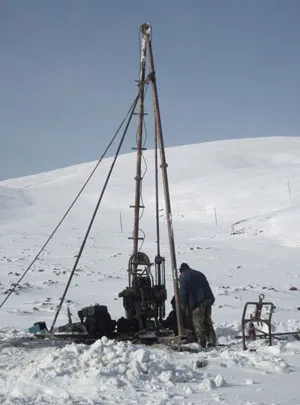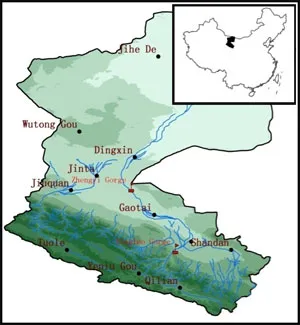By Laura Naranjo
Last summer, Tingjun Zhang spent two months in China, drilling boreholes and taking temperatures. Zhang, a senior research scientist at NSIDC, is part of a team studying permafrost in the upper reaches of the Heihe River Basin in the Qilian Mountains, which form the northeastern escarpment between the Tibetan Plateau and the Gobi Desert. Zhang’s research is part of a larger study of Heihe River basin along the north slope of the Qilian Mountains, funded by the Natural Science Foundation of China. His research team, along with nearly forty others, is hoping to gather enough data over the course of the study to form a clearer picture of how a changing climate may affect the plants, wildlife, and the people of the area.
Frozen layers
We are looking at how changes in permafrost are affecting the region's hydrology,” Zhang said. “We also want to understand how permafrost affects the ecosystem, because the area has grazing for sheep, cattle, and other livestock.” The permafrost underlying the study area is already considered warm, remaining only two degrees Celsius below freezing. Only a very slight warming would be disastrous for the region. “Air temperatures have increased by one degree Celsius over the past 30 years,” he said.
Permafrost is soil that remains frozen year-round. In many places, however, permafrost is topped by a shallow layer that scientists call an active layer, because it freezes and thaws seasonally. Over the study area that Zhang is investigating, this layer is 2 to 4 meters (6.5 to 13 feet) deep. Plants grow when an active layer is present, because the seasonal thawing releases water. The underlying permafrost acts like a barrier, locking moisture in and preventing it from draining through the soil. If this reserve of water does not remain near the surface, it could have serious consequences for grazing along the plateau. Zhang said, “As temperatures increase, the active layer gets deeper, meaning ground water levels get deeper and there is less water available near the surface to grow the vegetation animals need for grazing.” The current temperature records rely on sparse measurements, so one of Zhang’s projects is to install instruments that will take regular temperature readings in the area and develop a long-term record. He will return to China over the next few summers to continue his research and learn how permafrost in the region is responding to this gradual warming. He and his team will map the distribution of permafrost as well as the development of the active layer that irrigates the grasslands.
Considering carbon
Changes in permafrost could have more wide ranging affects, as well, because thawing permafrost releases carbon into the atmosphere. “There is a lot of carbon stored in permafrost, and it could really contribute to global warming,” Zhang said. He and his team will start investigating how much carbon might be released, should the area continue to warm. Carbon is a potent greenhouse gas, so thawing permafrost could fuel a global feedback loop that further warms the atmosphere.

